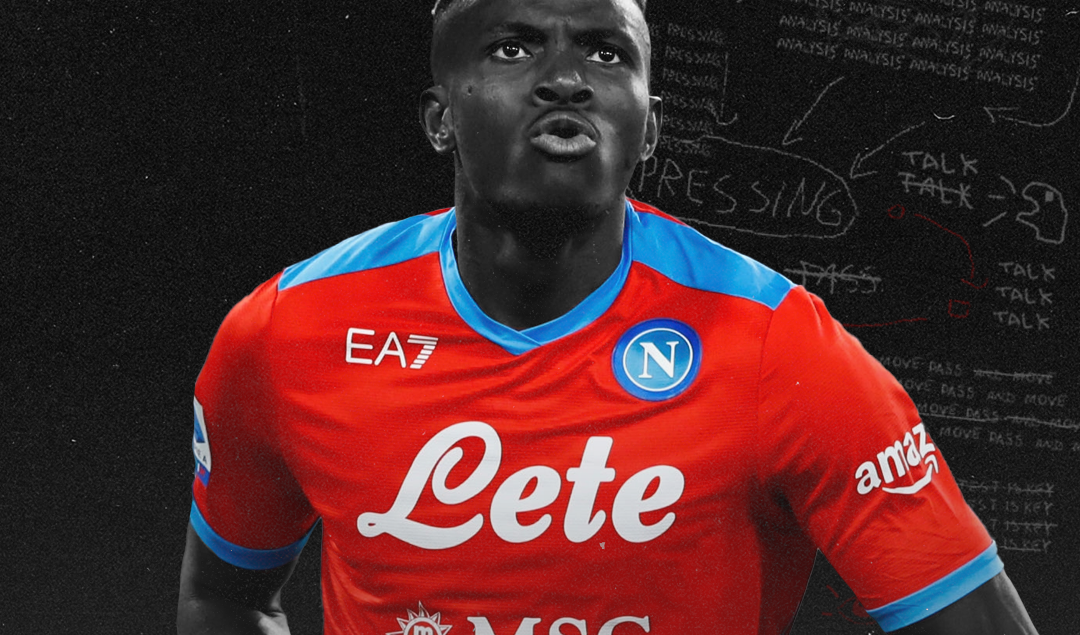Victor Osimhen and the Physics of the Impossible
It starts with a whisper. A rustle in the wind. The kind of sound defenders pretend not to hear but feel in their bones. It is the sound of something inevitable. Something terrifying. Something that cannot be outrun.
And then—he moves. like a ripple through time, like a shadow cast before the sun. A second ago, he was beside you. Now, he is elsewhere. A void where a man once stood. A ghost, a blur, a prophecy unfolding in real-time.
One who is not simply fast, nor is he merely strong. His game operates on a different plane, where gravity feels like a suggestion and space expands in his presence. He is both an outlier and a fundamental truth—existing at the edge of logic and yet embodies its most essential principles.
Temporal Genius of Ancelotti: Football as a Question of When, Not How
There is something unsettling about watching him move. Defenders anticipate where he should be, but he is never there. He is already gone, a frame ahead of his acceleration is not just quick; it is disruptive, a force that shatters defensive shape and leaves carefully laid plans in ruins.
He leaps, and for a moment, the laws of physics hold their breath. The ball drops, the defenders land, but Victor Osimhen? Osimhen is still rising.
How do you defend against a player who refuses to obey the limits of the game?
This is not just an article about a footballer. This is an investigation into the impossible.
Football’s False Prophets: The Cult of ‘Project’ Managers and the Death of Accountability
The Sprint That Alters Space
Speed in football is not just about running fast. It is about the manipulation of perceived distance. It is about how space expands and contracts in the presence of a certain player.
Osimhen’s pace is not linear—it is disruptive.
Most strikers, when running onto a ball, either gain ground or hold their line. Osimhen does something different. He creates the illusion of distance. He moves in ways that distort defenders’ calculations, making chasers believe they can reach him—until they realize, too late, that they cannot.
It is the subtle deceleration before acceleration. The shifting of weight, forcing defenders to commit one way before exploding in the other direction. It is why they stumble, why they mistime their challenges, why they seem to slow as he speeds up.
San Siro, Giuseppe Meazza, and the Two Tenants Who Can’t Stand Each Other
Osimhen does not simply run past defenders. He removes them from the race.
The Mechanics of the Impossible Finisher
Strikers are taught technique. The biomechanics of shooting. The balance of the planted foot, the shape of the body, the angle of the strike. But Osimhen’s goals do not come from controlled, repeatable movements. They come from moments that shouldn’t be possible.
There is no rhythm to his finishing. He is unorthodox, erratic, all awkward limbs and violent contact. His technique is not textbook, yet the ball keeps finding the back of the net.
Watch how he adjusts his body at the last possible second—how he generates power from impossible angles, how he shoots without needing perfect control. Most strikers need their mechanics to be set. Osimhen scores goals while falling, while off-balance, while stretching beyond his natural range.
His body should not be able to do these things. But it does.
The Striker Who Shouldn’t Exist
Modern football has tried to evolve past the No. 9. The era of the self-sufficient striker, the battering ram, the one-man wrecking crew—it was supposed to be over. Tactics now favor the multi-functional forward. The playmaker-striker who drops deep, who connects play, who participates in combination sequences. The age of control, of precision, of structure.
And yet, here is Osimhen—thriving, despite a system that does not fully account for him. He is not a false nine. He does not drop deep to dictate play. He does not operate in neat patterns.
The Antagonist: How Football’s Great Minds Build, Destroy, and Redefine the Game
He stretches the game. He destroys defensive shapes. He forces space to exist where it should not. He is not part of football’s next evolution. He is proof that some things in football are beyond evolution.
Conclusion
Physics tells us that what goes up must come down. That speed is relative. That acceleration follows a predictable curve. But watch Osimhen leap. Watch him sprint. Watch him finish from impossible angles.
He does not abide by the constraints of the game. He does not acknowledge the rules of space and time. Defenders chase him like shadows grasping at light. They try to measure him, to contain him, to predict his movements. But Osimhen is not bound by prediction.
He is not bound by logic. He is a rejection of football’s limits. He is the physics of the impossible.
By Tobi Peter / @keepIT_tactical
Featured Image: @GabFoligno / @GabFoligno / DeFodi Images
